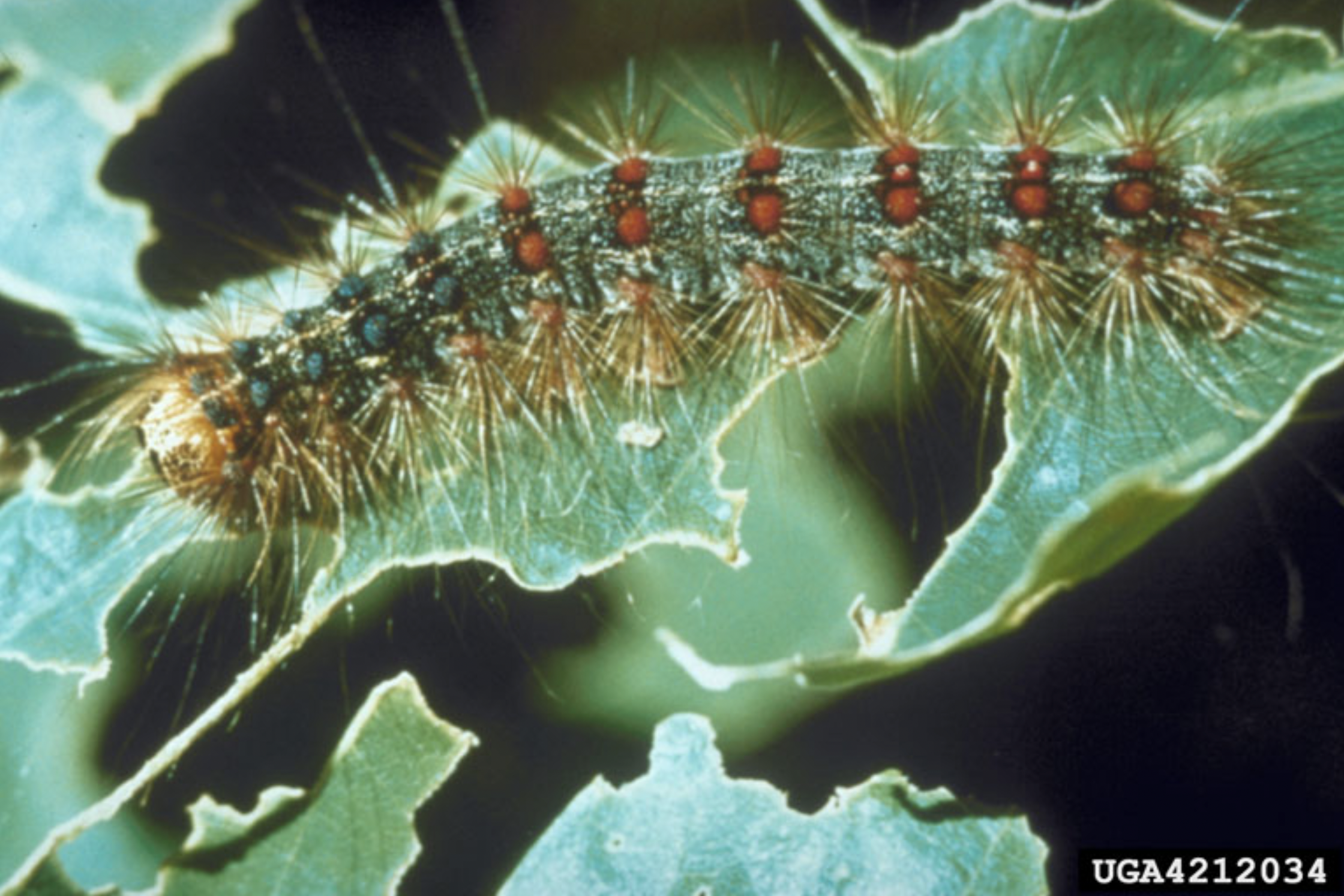Return of the Spongy Moth (Formerly Gypsy Moth)
/By Kathy Kromroy, 2022
Spongy moth egg mass, Burroughs Trail
Toward the end of August last year, I noticed pale brown fuzzy blotches, about the size of an oblong quarter, on a few oak and birch trunks on our island property on North Shore Road. I recognized these fuzzy blotches as egg masses that had been deposited by female spongy moths Lymantria dispar, formerly called gypsy moths. In September I found a few egg masses on scattered trees and the sign at the Burroughs Trailhead, and in October I saw several trees with at least one egg mass during an hour of looking around the Town Park parking lot.
Background Since its introduction to Massachusetts in the 1860s, spongy moth has spread and is now widely established throughout the northeastern United States and eastern Canada. Spongy moth caterpillars feed on the leaves of trees and shrubs of over 300 species and can defoliate entire forests during outbreaks. Healthy trees may re-foliate the same season, but stressed trees are less likely to recover, and are left more susceptible to other stresses like drought and disease. Repeated years of defoliation can result in significant mortality.
Biological controls for spongy moth (fungi, viruses, parasitic insects) have been introduced in many areas, including the island, and help keep the population in check. Several physical and chemical management methods are available, the choice of method depending on the use of the infested lands, the size of the infestation, and available funding, among other factors.
At this time, spongy moth is established in the eastern two thirds of Wisconsin, including Madeline and the rest of the Apostle Islands. These areas are included in the spongy moth quarantine, which means that regulations are in place to restrict the movement of items that could be carrying any life stage (egg masses, caterpillars, pupae or moths).
Aerial spray treatments will be carried out in 2022 in western parts of the State, where spongy moth is not yet established, by Wisconsin Department of Agriculture, Trade and Consumer Protection (WI DATCP) in cooperation with the USDA Forest Service. The Wisconsin Department of Natural Resources (WI DNR) may treat small areas in places where the moth is established, but most often treatments conducted where the moth is already established are funded by local governments and other groups.
Peter A. Rush, USDA Forest Service, Bugwood.org
What’s going on now? I had not seen any traps for spongy moth on the island for several years, so I contacted several forest health professionals to request guidance for what we should do in 2022, given the egg masses I had seen. My contacts included Charly Ray, consulting forester for the MIWP, along with Paul Cigan and Andrea Diss-Torrance, plant pest and disease specialists, WI DNR. I discovered that although higher than expected numbers of spongy moths were trapped on the Bayfield Peninsula in the summer of 2021, the consensus is that the number of egg masses I was observing on the island were unlikely to result in major defoliation in 2022.
That being said:
• A survey for egg masses in order to have some measure of the current spongy moth population is a good idea in areas of high public use and areas with trees of special concern. I will coordinate the survey this spring.
• Results of the survey will allow us to estimate the potential for defoliation in 2022 and thus decide if we want to implement any site-specific management activities.
• Reasonable areas for the survey include trailheads, parking areas at the Town and State Parks, and downtown.
• One type of management — destruction of the egg masses, will be done during the survey and through the spring until the eggs hatch:
– Application of Golden Pest Spray oil directly to the egg massess will destroy them when the temperature is above 40 degrees.
– Egg masses can be scraped into a container, then soaked in soapy water for two days to kill them.
My to-do list:
• By mid-May, complete the survey and destruction of egg masses at the selected sites.
• Send the egg mass location and count data to Paul Cigan for mapping, review, and guidance on other management actions.
• Arrange for distribution of outreach materials to island residents and visitors that will enable them to identify and destroy the various life stages of spongy moth, and explain the quarantine restrictions.
For more information, refer to these websites:
https://datcp.wi.gov/Pages/SpongyMoth.aspx
https://dnr.wisconsin.gov/topic/foresthealth/spongymoth
https://fyi.extension.wisc.edu/gypsymothinwisconsin/life-cycle-and-biology-3/
Read the Autumn 2022 update article in Education & Advocacy for additional information.



















